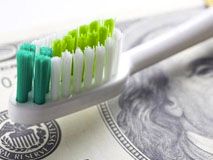Dental practice valuations: Different methodologies for different reasons?

What is the purpose of using varied techniques for dental practice valuations? Let’s look at the purposes that dental practice valuations serve. Practice transitions may come to mind. There are associate acquisitions, third party sales and transitions between partners or existing shareholders. Divorce is another reason for a dental practice valuation. Adjustments to compensation causing increases in value from an employee’s efforts may be a reason for change from one appraisal date to the next. Bonus arrangements are sometimes based on the increase in practice worth.
The important point is one of consistency in methodology when preparing the valuation. How many valuation methods are there for checking the preparer’s analysis? Does the reason for the valuation matter? Is there a more correct method to determine the market price of the dental practice for any purpose?
Methods for Evaluating the Dental Practice
Certain methods for determining the financial status of a dental practice can be misleading in a material manner. There are those that use the gross revenue multiplier approach. This method utilizes the gross revenues of the practice and uses a multiple of that amount to determine the market pricing of the practice. This reasoning is fraught with danger.
Suppose there are two practices under consideration for acquisition. One has gross revenue of $1,000,000 and the other has gross revenue of $800,000. Using a multiple of revenue of 65%, one would think that the $1,000,000 practice was worth $650,000 and the $800,000 practice was worth $520,000. If the $1,000,000 practice is operating with overhead of 70%, it is producing $300,000 in profits for the owner. The $800,000 practice may have overhead of 55%. It is earning profit for the owner of $360,000. Which is worth more?
The profit should be considered to determine the amount available to repay the debt used in acquiring the practice. The summation of assets method uses the profit to the owner and includes all discretionary expense items that a buyer would not necessarily have, to determine the amount available for use for acquiring the dental practice and what truly can be used to amortize the debt borrowed for the transition price. The summation of assets method assists greatly in determining what the transition price should be, because it reflects what can be used by the buyer in a historic cash flow approach for debt servicing.
Other Methodologies and the Purposes of the Valuation
Another format used to determine the value of a dental practice is the capitalization of earnings method. This avails itself of the cost of borrowed funds and liquidity of the practice. It compares the risk of acquiring the practice to a safe investment such as government bonds. Of all of the methodologies analyzed, the summation of assets and capitalization of earnings are usually the most reliable. As stated in this article, the gross multiplier method can be misleading.
Whether for a practice transition, divorce proceeding, bonus arrangement or any other dental practice valuation purpose, these two methods should be fairly comparable in their outcomes. A value determined by either of these methods is a good net worth indicator and can be used to check the evaluator’s numbers against each other.
Other Points of Interest included in a Dental Practice Valuation
There is another material asset item that should be included in a dental practice valuation that is a necessity for the most favorable tax treatment or financial arrangement. That item is goodwill and its allocation. Most importantly, the amount attributed between the dentist on an individual basis and the practice, or enterprise. If the evaluator of the practice does not include that allocation, the owner may need another valuation with an opinion regarding that asset and its attribution. The personal or dental practice goodwill allocation can be costly in estimating the tax upon the transition, amount of practice distribution in a divorce proceeding or amount attributed to an employment arrangement.
The methodologies are the same and the final worth of the practice should be the same for any valuation purpose unless specifically ordered by a court for liquidation, as an example. In a death, or possible bankruptcy situation, where time is of the essence and in any approach that is not based on a going concern entity, the valuation method would be different, as well. The allocation of the goodwill assists in determining how much is left for the owner in almost any dental practice valuation after tax consequences, in a divorce proceeding or in determining any other purpose other than those described in this paragraph.